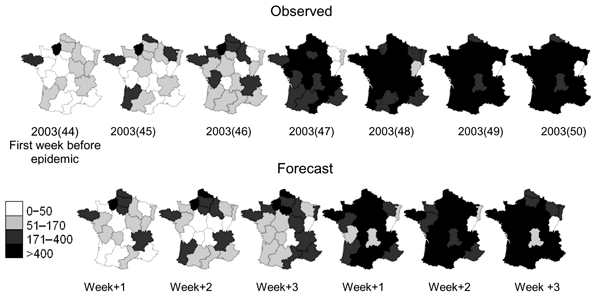Volume 12, Number 3—March 2006
Research
Medication Sales and Syndromic Surveillance, France
Figure 3

Figure 3. Evolution of regional influenzalike illness (ILI) incidence during the 2003–04 epidemic. The observed maps (first line) were constructed by using data from the French Sentinel Network. The forecast maps (for the first 6 epidemic weeks) 1, 2, and 3 weeks ahead show the results of the regional models when medication sales are used. The forecast horizon is indicated below each map. For example, for 2003(49), ILI predicted incidence is calculated by employing the model with data until week 47 of year 2003. Thus, the time forecasting horizon is 2 weeks.
1Both authors contributed equally to this research.
Page created: January 27, 2012
Page updated: January 27, 2012
Page reviewed: January 27, 2012
The conclusions, findings, and opinions expressed by authors contributing to this journal do not necessarily reflect the official position of the U.S. Department of Health and Human Services, the Public Health Service, the Centers for Disease Control and Prevention, or the authors' affiliated institutions. Use of trade names is for identification only and does not imply endorsement by any of the groups named above.